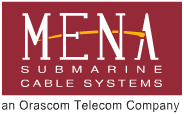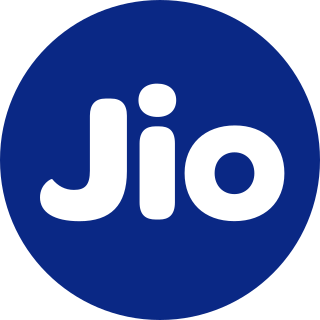India's telecommunication network is the second largest in the world by number of telephone users with over 1.1 billion subscribers as of December 2023. It has one of the lowest call tariffs in the world enabled by multiple large-scale telecom operators and the ensuant hyper-competition between them. India has the world's second largest Internet user-base with over 904 million broadband internet subscribers as of December 2023.

The telecommunication infrastructure of Singapore spans the entire city-state. Its development level is high, with close accessibility to the infrastructure from nearly all inhabited parts of the island and for all of the population, with exceptions. Today, the country is considered an international telecommunications hub, an achievement that was driven by Singapore's view that high-quality telecommunications is one of the critical factors that support its economic growth.

Reliance Communications Limited (RCOM) was an Indian mobile network provider headquartered in Navi Mumbai, Maharashtra that offered voice and 2G and 3G and 4G data services. In February 2019, the company filed for bankruptcy as it was unable to sell assets to repay its debt. It has an estimated debt of ₹500 billion against assets worth ₹180 billion.
Fibre-optic Link Around the Globe (FLAG) is a 28,000-kilometre-long fibre optic mostly-submarine communications cable that connects the United Kingdom, Japan, India, and many places in between. The cable is operated by Global Cloud Xchange, a subsidiary of RCOM. The system runs from the eastern coast of North America to Japan. Its Europe–Asia segment was the fourth longest cable in the world in 2008.
Global Cloud Xchange (GCX) is a company which provides network services for enterprises, new media providers and telecoms carriers. In September 2022, it was acquired by 3i Infrastructure for $512 million.
SEA-ME-WE3 or South-East Asia - Middle East - Western Europe 3 is an optical submarine telecommunications cable linking those regions and is the longest in the world. Completed in late 2000, it is led by France Telecom and China Telecom, and is administered by Singtel, a telecommunications operator owned by the Government of Singapore. The Consortium is formed by 92 other investors from the telecom industry. It was commissioned in March 2000.

South East Asia–Middle East–Western Europe 4 is an optical fibre submarine communications cable system that carries telecommunications between Singapore, Malaysia, Thailand, Bangladesh, India, Sri Lanka, Pakistan, United Arab Emirates, Saudi Arabia, Egypt, Italy, Tunisia, Algeria and France.
i2i is a submarine telecommunications cable connecting Chennai, India, and Tuas, Singapore. It was completed in April 2002 and is fully owned by Bharti Airtel after Singtel divested its interest in 2007.
Raajjé Online (ROL) is a broadband internet service provided by Focus Infocom Private Limited.
I-ME-WE is a 12,091-kilometre (7,513 mi) submarine communications cable system linking Europe and India via the Middle East. At launch, the design capacity was 3.84 Tbit/s, but after upgrades by Mitsubishi Electric in 2016, the new design capacity was rated at 5.6 Tbit/s. The cable entered service in December 2010.
Europe India Gateway (EIG) is a submarine communications cable system that connects the U.K., Portugal, Gibraltar, Monaco, France, Libya, Egypt, Saudi Arabia, Djibouti, Oman, United Arab Emirates, and India.

Middle East North Africa (MENA) is a submarine communications cable system that is planned to connect Italy, Greece, Egypt, Saudi Arabia, Oman, and India. It will be about 9,000 kilometres (5,600 mi) long and is planned to deliver up to 5.76 terabits per second.
Sandip Das is an Indian corporate executive in the telecom business. He serves as a senior advisor at Analysys Mason and a member of the advisory board of Sterlite Technologies. He has served as Deputy Managing Director of Hutchison Essar, Executive Director and Chief Executive Officer of Maxis Communications, and headed Reliance Jio Infocomm.

Gulf Bridge International (GBI) is the Middle East's first privately owned submarine cable system linking the countries bordering the Persian Gulf on a self-healing ring to each other and onward to Europe, Africa and Asia. Gulf Bridge International (GBI), both owns and operates this submarine cable asset as a carrier's carrier as well as offering a full suite of wholesale transmission, IP capacity options, and Enterprise Services. Its main headquarters are located at the Qatar Science & Technology Park in Doha, Qatar.
On June 8, 2011, a consortium of four leading telecom carriers from four countries signed the Construction and Maintenance Agreement for the new cable system — Europe-Persia Express Gateway (EPEG).
West Indian Ocean Cable Company (WIOCC) operates as a wholesaler, providing capacity to international telecoms, cloud operators, content providers and internet service providers within and out of Africa. WIOCC offers carriers connectivity to over 550 locations across 30 African countries – utilising more than 75,000 km (47,000 mi) of terrestrial fibre and 200,000 km (120,000 mi) of submarine fibre-optic cable. WIOCC's international network reach currently extends to 100 cities in 29 countries in Europe and more than 700 cities in 70 countries globally.

Reliance Jio Infocomm Limited is an Indian telecommunications company and a subsidiary of Jio Platforms, headquartered in Navi Mumbai, Maharashtra. It operates a national LTE network with coverage across all 22 telecom circles. Jio offers 5G, 4G and 4G+ services all over India. Its 6G service is in the works.

Asia-Africa-Europe 1 (AAE-1) is a 25,000 km submarine communications cable system from South East Asia to Europe across Egypt, connecting Hong Kong, Vietnam, Cambodia, Malaysia, Singapore, Thailand, Myanmar, India, Pakistan, Oman, UAE, Qatar, Yemen, Djibouti, Saudi Arabia, Egypt, Greece, Italy, and France.
The Oman Australia Cable (OAC) is a 9,800 km fibre-optic submarine communications cable that entered service in September 2022, linking Oman and Australia via the Cocos (Keeling) Islands. The cable consists of three fibre pairs and had an initial design capacity of 39 terabits per second.







